Cropwell Bishop Streets: — Stackyard Close (12-7-20)

Stackyard Close is the newest housing development in Cropwell Bishop but because it is located in the centre of the village, its site has a long history.
All but one of the homes are brand new buildings but the one alongside Church Street is inside the shell of a large, old building.
This was built as a cartshed for the Shelton family in 1890. George Shelton was a Farmer and Plaster Merchant in 1832. The family became substantial Cropwell farmers and were still in the plastering trade in the 1890s.
The cartshed was built by a Cropwell bricklayer, David Salvin, and is considered an example of some of the finest early brickwork in the village.
Back in 2015, the site of Stackyard Close was, essentially, a storage space. As you can see from the photographs below, it had a large empty yard where cars, lorries and buses had ample room to turn around and park. Buildings of various ages and construction held machinery, containers and vehicles: there were also 7 garages for cars.
But there were times when it was people that filled the yard. In the mid 20th century, methodist evangelists Silverwood and Whitehouse sometimes visited the village and set up a marquee in the stackyard.
The black corrugated building was at least 70 years old. The black and white photograph below was taken in 1949 from the top of the church tower and the building is in the centre surrounded by grass.
For much of the 20th century, the yard was mainly used to store grain and house lorries owned by Cropwell Bishop's own independent Grain Merchant, H. Simpson and Sons Ltd. Consequently, it was known by local people as Simpsons Yard.
The company had its offices on Church Street and you will learn more about the Simpson family in the Church Street article later this year.
Tony Jarrow
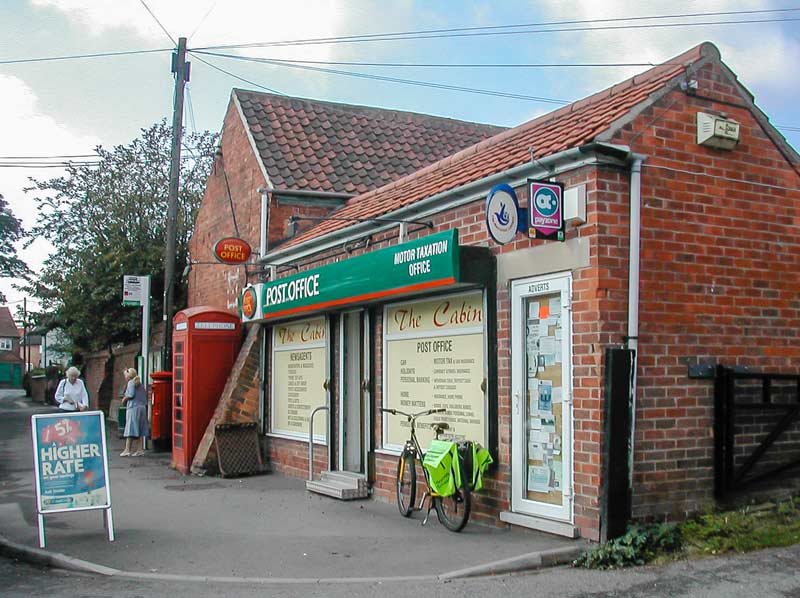
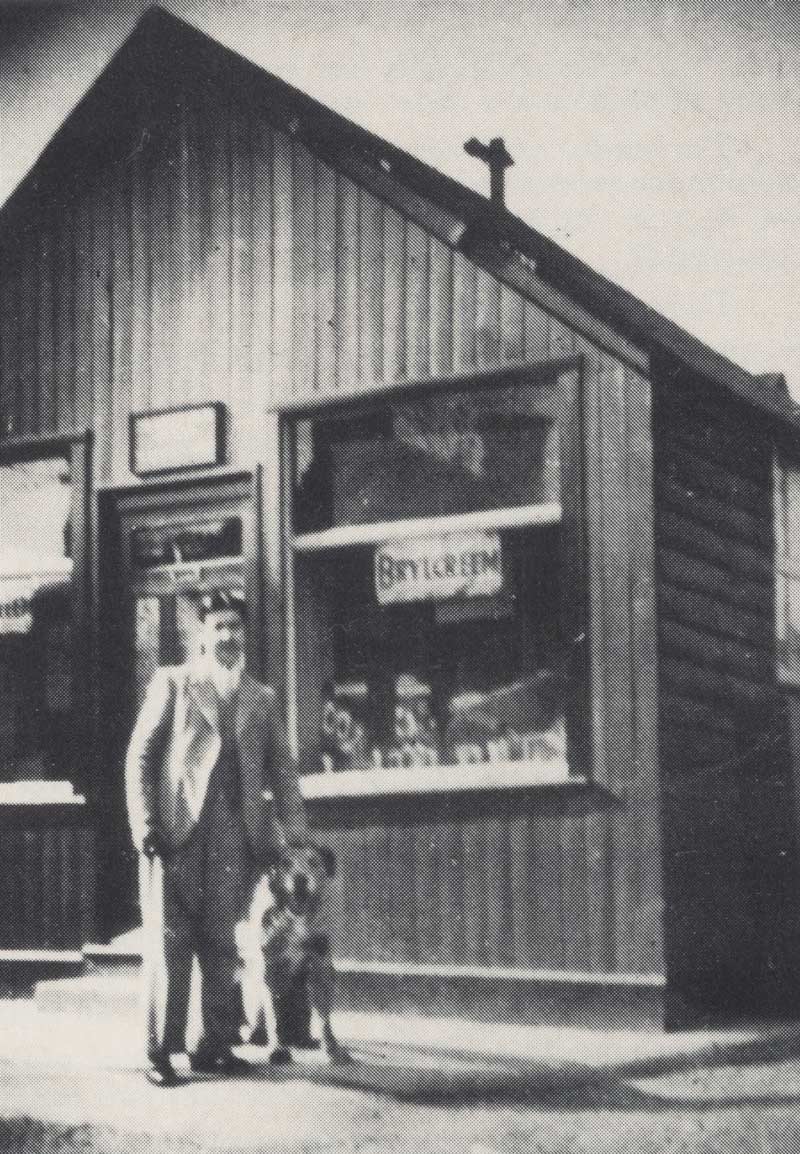
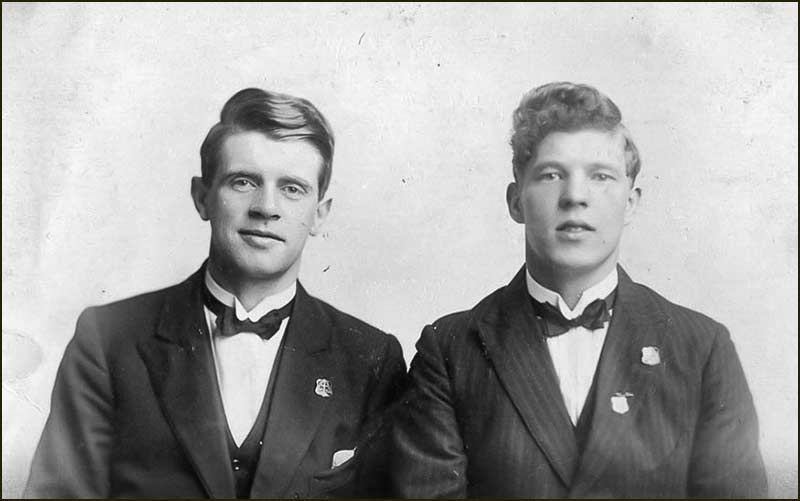
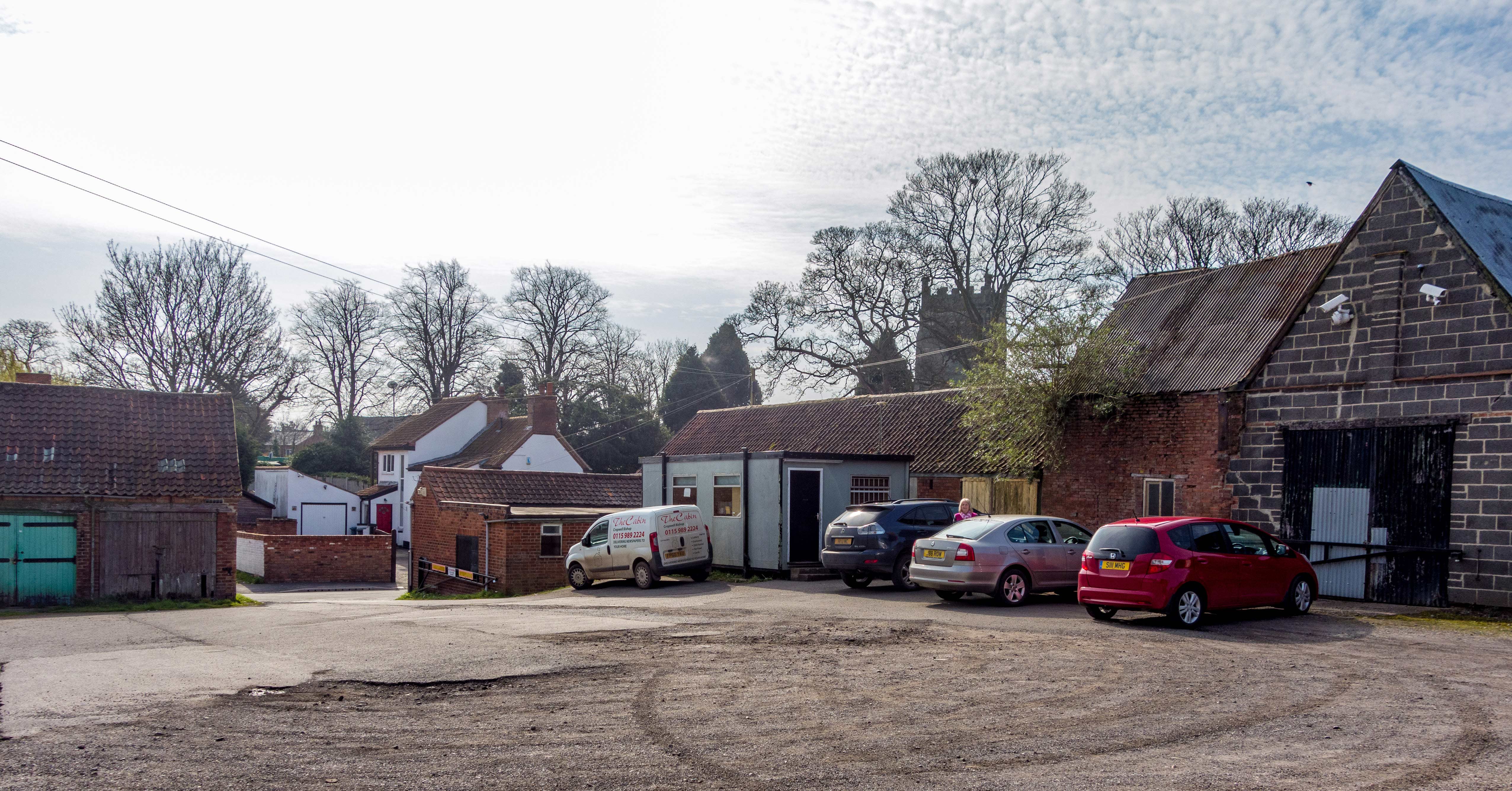

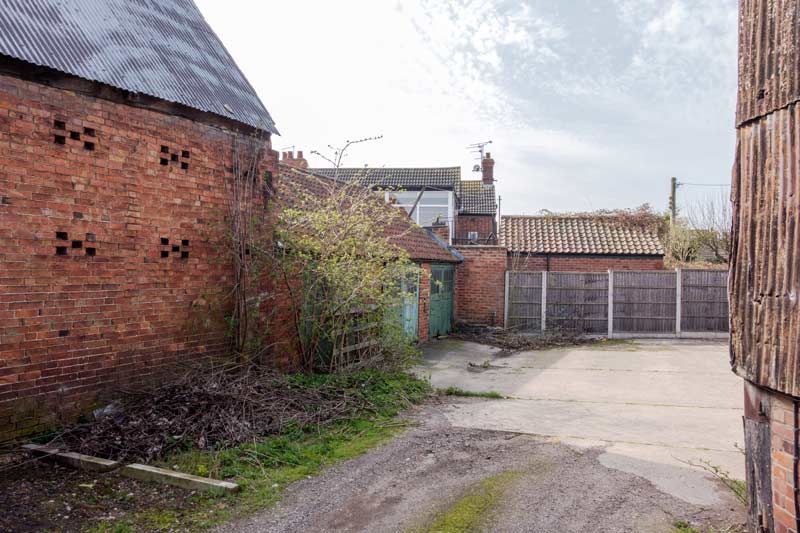



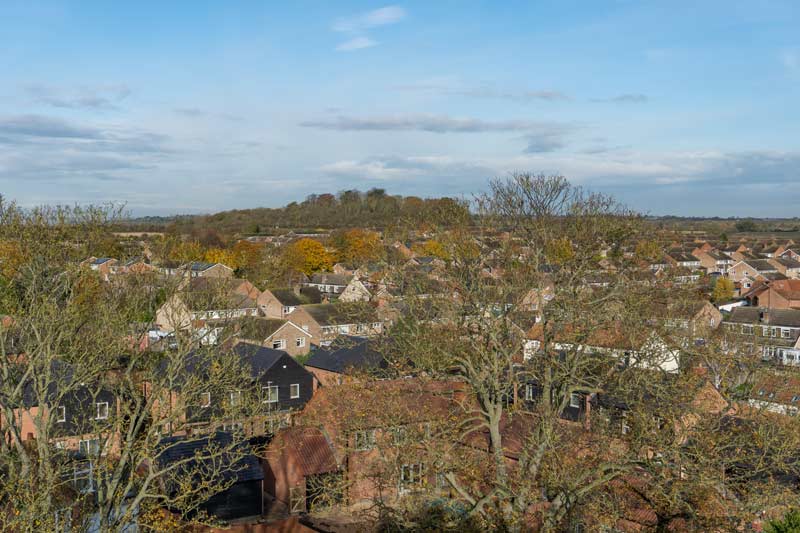
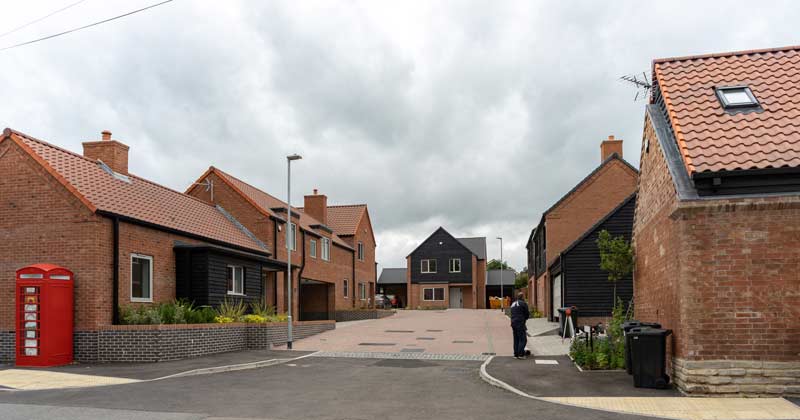
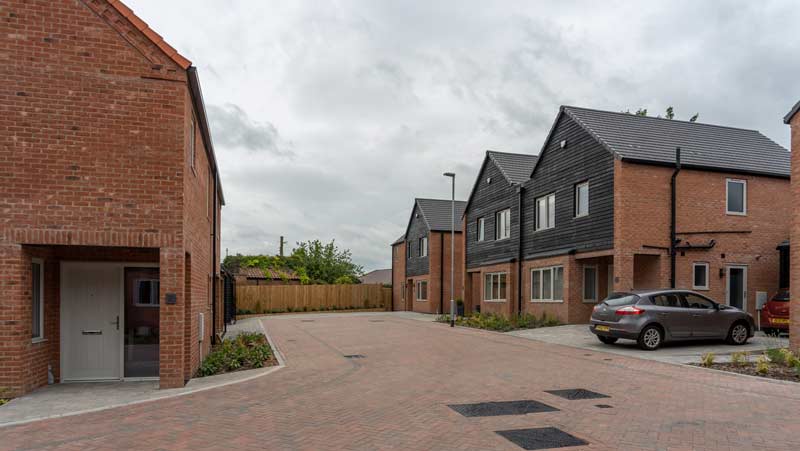
The information for these articles comes from my own notes and photographs, the research notes of Anne Terzza, the memory of Pam Barlow and hours of searching the internet.
In spite of this effort, there will certainly be other individuals who are able to provide further information, photographs, comments and corrections that would enhance these articles: I would greatly value such contributions.
If you feel that you might be able to provide any useful information, either before or after a street article is published, please contact me (click "Contacts" for phone & email details).
